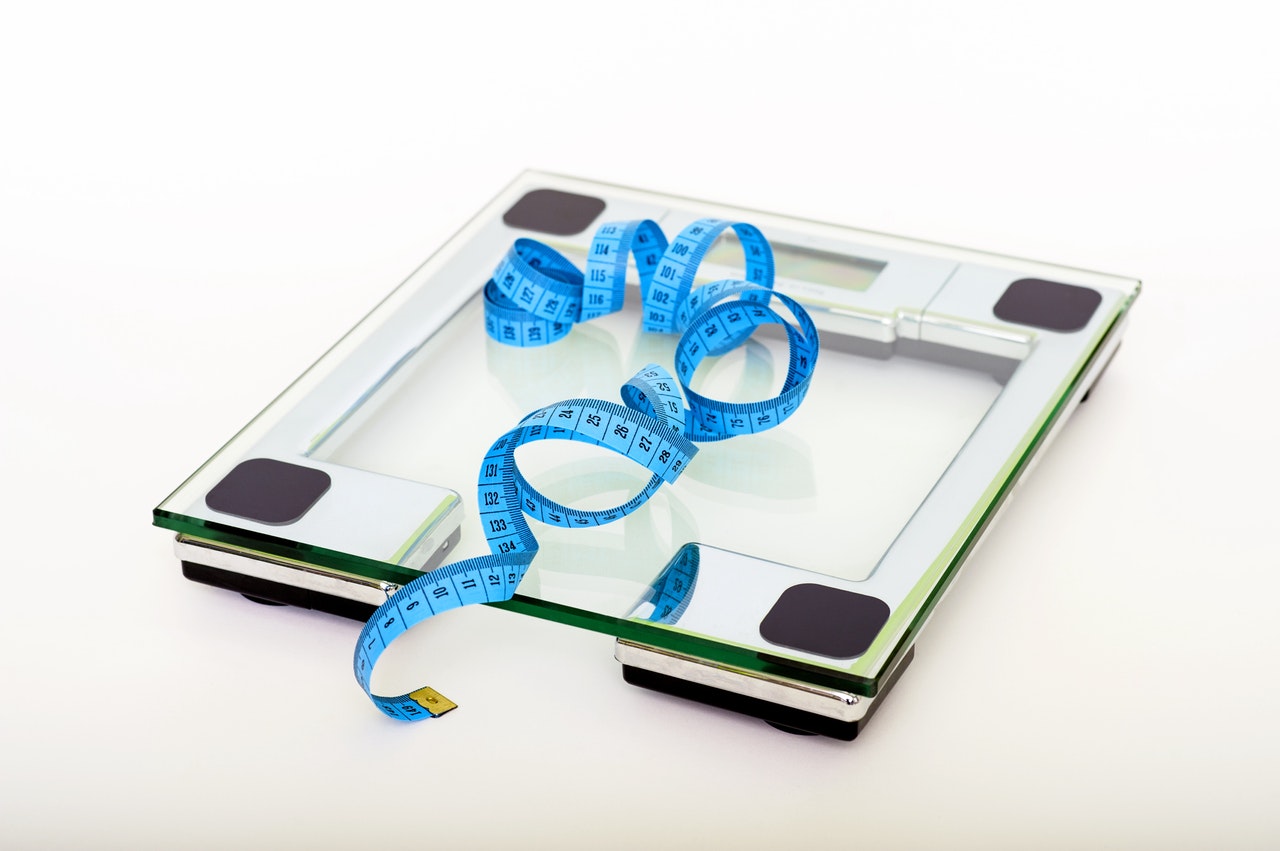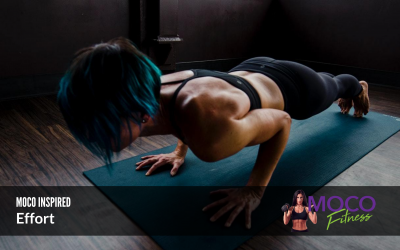Invest in a Scale
Perhaps the most obvious way to track your weight loss is the simple act of weighing yourself. I only recommend weekly or monthly weigh-ins. Anything more may cause you to become too fixated on the number and add unneeded focus on daily fluctuations that come from water weight, bloat, periods, or the food you ate that day. Try to schedule your weigh-ins in the morning, before your first meal, to provide a more consistent baseline to track your progress over time. More importantly, be sure to use the same scale when weighing yourself.
It’s important to keep in mind that your weight doesn’t tell a full story of progress. If you are building muscle strength, your weight may remain static — or even increase — despite the fact that you are losing body fat. Because muscle is more dense than fat, a pound of muscle takes up less space than fat, meaning a cubic inch of muscle will weigh more than a cubic inch of fat.
Pay Attention to Your Clothing
A great marker of whether or not your hard work is paying off is how your clothing fits — the obvious being needing to size down. Before you even get to the place where you’ve dropped an entire dress size, pay attention to how your current clothes fit. When I first began to lose weight, I noticed that my jeans fit a little more comfortably than they used to (especially after big meals) because the bit of fat that had accumulated around my obliques was disappearing. You may notice the same, or maybe the sleeves of a shirt aren’t as tight as they used to be. Perhaps you need to fasten your bra a little bit tighter than you once did. All of these markers are indications that you’re dropping body fat.
It doesn’t stop at loose clothing, either. Check your backside out the next time you throw on a pair of workout leggings. Does your butt sit a little bit higher? Is it looking a little more rounded than ever before? That’s because you are getting those booty gains!
Bust Out the Tape Measure
All bodies are unique, including the way they lose fat. Some people might lose weight in their midsection initially, while others might lose it more proportionally throughout their body. To get a sense of where you are losing body fat, measure common areas where it accumulates, like the waist, upper arms, bust, thighs, and neck. Note your measurements on a doc and track them on a monthly basis to see how things change over time.
Don’t be alarmed if you aren’t seeing inches fly off; a tape measure won’t be able to record all fat loss. Additionally, if you’re building muscle, the measurements may stay the same or increase. When I lost fat in my arms, I was also building up my bicep muscles. And while I could see that my arms looked slimmer and more toned, the measurements were pretty much the same.
Track Your Body Composition
While this method is a little harder to do on your own, measuring your body composition is accepted by many experts as the most reliable way to track weight loss. There are a few ways to go about this — anywhere from being weighed in water to measuring body fat with an electrical current — but one thing is true with all of them: they require assistance and tend to cost more than any other method. In the end, these tests will tell you how much of your body is composed of fat and lean tissue, meaning you get an accurate read of how much fat you are losing and muscle you may be gaining.
Most gyms and trainers have tools to measure body composition. And you may also live near a facility that specializes solely in providing clients with different types of body measurements, like body composition and metabolic rate.
Take Photos of Yourself
When it comes to something like weight loss and how we look, it can be hard to gain perspective and see how small changes add up over time. Taking photos is an easy workaround for this. Photographic evidence does help provide more clarity that you might miss in the usual day-to-day grind.
For a complete picture of your changes, I recommend taking a video of yourself in a bikini or sports bra and shorts. While the video runs, slowly spin to capture a 360-degree view of your body. When playing the video back, screenshot views from the front, back, and both sides. Be sure to also note the date of each image. Do this every four to six weeks; you’ll be astounded to see how all those small changes add up over time!
It’s important to remember that with any of the above methods, nothing is foolproof; they are additional tools to help you on your journey. Equally important is how you’re feeling. Do you have more energy? Are you sleeping better? Can you exercise longer or harder than ever before? Are you starting to actually crave healthy foods? If you answered yes to any or all of these questions, chances are you’re doing it right!







